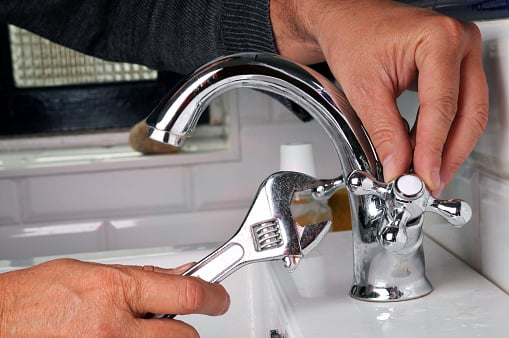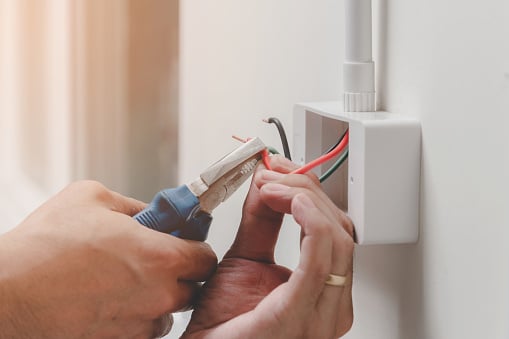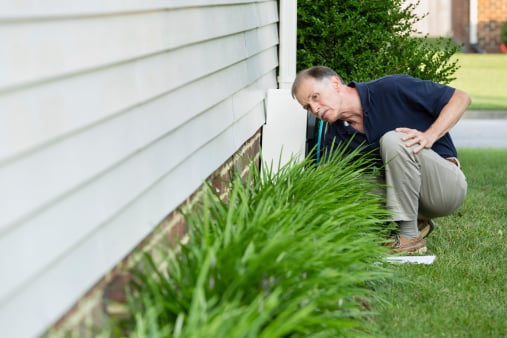Ashley Wirgau
There are a multitude of steps to climb on your way to the finalized purchase of a home, and the home inspection is one of the most important. Different from a home appraisal, the inspection provides homebuyers with a detailed list of existing issues contained within a given property. An experienced professional adept at identifying both structural and cosmetic problems examines the home and compiles a report including both internal and external problems.
While incredibly helpful in theory, home inspection reports can be difficult for the average homeowner to decipher (especially a first-time buyer). So how do you know the difference between a deal breaker and a deal maker? We’re here to shed some light on this oftentimes cloudy step in the homebuying process.
A home inspection report should include a review of the home’s HVAC and electrical systems, plumbing, flooring, doors and windows, foundation, roofing and ventilation system, and any applicable basement and/or garage. It may also cover a home’s exterior decking or porches and patios. While many folks have a general understanding of these systems and structures, it can be difficult to determine which identified issues within these areas are worth your worry – so let’s start small and work our way up.
The “Who Cares?”

Minor Plumbing Problems: Drippy faucets, slow drains, and interchanged hot and cold water knobs are the least of your concerns. These inconveniences are easy, and sometimes not even necessary, to correct once you’ve unpacked and made yourself at home.
Dirty Air Ducts: This minor maintenance issue comes up on inspection reports every day and is no cause for alarm. Most homeowners fail to keep up with the recommended cleanings every 3-5 years, so homebuyers are often left to cover this expense shortly after move in.
Blown Window Seals: This is a common problem in many homes. When a seal ruptures on a window, the R value of that window decreases substantially, leading to less insulation and potentially higher energy expenses. However, aside from minimally raised heating and cooling costs, a broken seal will only cause occasional condensation in between panes and fogginess that may increase over time. It is possible to fix a blown seal yourself but DIY on this type of work is tedious, so hiring a professional is likely your best bet.
The Hiccups

Water Damage: This one is tricky, and it really all depends on where and why the water damage originated. A leaky drain is a quick fix, but a leaky roof could potentially cost you thousands. Follow your inspector throughout the examination of the home and ask lots of questions to obtain the most information possible. They can be a fantastic resource, and one you are paying for, so use them!
Electrical Issues: Again, it all depends. If the inspection report includes minor fixes like missing GFIs in your kitchen or a light switch to nowhere, it’s no big deal. If they find larger problems like wiring issues with the breaker box or improper installation and securing of wiring throughout the house, it could present potential fire dangers or a costly bill should you choose to correct these problems. For a larger list of common issues, check out This Old House and their how to guide.
The Heck No’s

Creepy Crawlies: While the occasional stray ant or mouse sighting cannot be avoided, the constant presence of pests within a home should be taken very seriously. Termites and carpenter ants cause extensive damage to a property and can be difficult to exterminate. Mice and bats left unchecked in attics and outbuildings create potentially hazardous areas due to toxins that can build up in their excrement. Squirrels and other small rodents can tear through insulation and cause fire hazards should they get curious about electrical wires. Signs of a constant or rampant pest presence should be taken seriously and corrected by the existing homeowner prior to any sale. Already signed the paperwork? Here are some helpful hints on how to keep pests out of your home.
Work Done Without a Permit: Homeowners looking to save a buck often try their hand at home improvement jobs or hire folks to remodel without pulling proper permits within their county or township. Regardless of the quality of the finished product, this missed step could be incredibly costly, so beware. Buyers should insist that the seller handle any missing permits and building inspections prior to the property changing hands to prevent expensive fixes in the future.
Mold: Mold is oftentimes the result of water damage or poor ventilation within a home. For example, a bathroom fan that vents into an attic space instead of the outdoors will cause excessive moisture to build, inviting mold. While the ventilation problem is correctable, the existing mold should be inspected by a professional and a proper assessment of remediation obtained before closing the deal.
Foundation Problems: The foundation of a house affects the entire structure, so any time issues arise, they should be taken seriously. Visible cracks along walls, ill-closing doors, sagging floors – these could all indicate much larger problems lurking below ground. There are a gamut of problems connected to a house’s foundation and quite a few warning signs to accompany them, so do your research and be willing to walk away when issues are found.
The home inspection is essentially your chance to test drive a house, so do not overlook this inexpensive means of uncovering costly situations down the road. When done properly and by an experienced professional, this stage of the homebuying process can be a real lifesaver, but it should be more than just a piece of paper. Take time to walk through the inspection with your hired professional and get answers to your questions in real time to prevent a hiccup from becoming a high priced, homebuying mistake.
.png?width=375&height=150&name=MicrosoftTeams-image%20(63).png)

